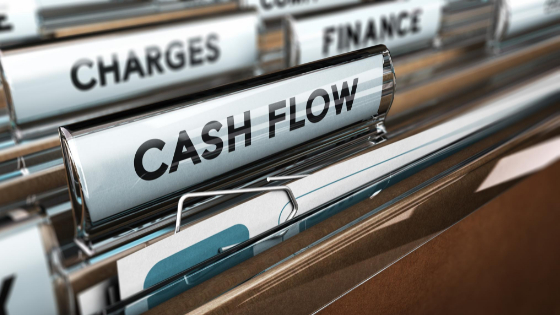Managing your cash flow effectively is crucial when you’re running a small business. Failure to do so can send you out of business fast. In fact, cash flow problems are one of the leading causes of small business failure in Australia. If your business cash flow problems don’t send you broke, they will be sure to cause you hassles.
Here are our top 5 tips for avoiding (or at least minimising) any cash flow issues in your small business.
Tip 1: Monitor it!
This seems obvious, but it’s amazing how many small business owners don’t monitor their cash flow. Without appropriate monitoring, you can run into problems because you won’t have a handle on the timing of funds flowing in and out of your business. Without monitoring your cash flows, it’s easy to be caught short when you need to pay your suppliers.
These days, there’s accounting software that can help to make monitoring your business operating cash flow quick and easy so you can keep your finger firmly on the pulse of your cash position.
Tip 2: Implement strategies to increase your customer’s payment speed
When you’re operating under credit terms, any cash paid by you for expenses needed for a particular job may not come back in the form of cash flow for a number of months. For example, let’s say you are a manufacturer and you have outlaid cash on wages and goods that have gone exclusively into one project. If the customer is issued an invoice once the project is delivered, and then takes 30 days to pay, you will not see any cash coming in for this particular project until the work is completed, delivered and the invoice paid — which could be months after the initial outlay of cash to get the project started.
Increasing the speed at which your customers pay you can help manage cash shortages. Reducing your credit terms may not be the best way to nudge your customers to pay more promptly, however, there are incentives or penalties that can help speed the process along. Offering an early payment discount or a late payment fee are two tools that can help keep your operating cash flows flowing.
Invoice Finance can be an effective way to access cash from your business customer’s unpaid invoices. Rather than waiting out the payment terms to receive your revenue, Invoice Finance allows you to access up to 85% of the value of your accounts receivable ledger.
Tip 3: Review all of your business expenses
Reduce or eliminate any non-essential expenses. This is just good business practice, but it’s especially important if you’re having cash flow issues. Look at the timing of your essential expenses as well. Can they be adjusted to better align with the timing of your income? Matching your cash inflows with cash outflows can help ensure you’ve got funds available when you need to pay expenses like wages, rent or something else.
Tip 4: Have an emergency backup
In the personal budget world, it can be a good idea to set aside a stash of funds to lean on in emergencies. In the commercial world, cash equivalents are often used more productively elsewhere — for example, used for investing activities, research and development, marketing, or other business growth opportunities.
If your cash balance is low and you run into an emergency, commercial finance can be leveraged to quickly access the funds you need. Having an overdraft or line of credit facility established can be a good backup option for unexpected cash shortages.
Tip 5: Don’t tie up too much money unnecessarily
Inventory and equipment are essential to keep your business running, but they can be areas where significant cash flow issues occur. For example, ordering a bulk amount of stock can be necessary to negotiate discounts and manage demand for your products or services, but the cash outflow associated with inventory orders can be crippling if not timed or managed well.
When undertaking a cash flow analysis, negative cash flow resulting from equipment or inventory purchases in itself does not signal an issue — these are essential components that will be used to produce revenue and profit. The timing of your orders and the amount of inventory you keep on hand can play a part in cash flow management. However, there are more effective tools that can help reduce the strain that can come with a negative cash flow position:
- Trade Finance funds the domestic or international purchase of goods. This allows the business more time to make payment for the goods, which helps to reduce cash flow gaps between purchasing and selling goods.
- Equipment Finance funds the purchase of business assets and equipment, such as vehicles and machinery. Equipment Finance is often used to purchase assets, however, if you have existing assets that you own outright, a sale and leaseback agreement is a tool often used to unlock capital from the equipment you own.
Strategic finance solutions allow you to run and grow your business by managing cash flow and providing easy access to working capital when needed.
Strategic Commercial Finance
While incentivising, penalising or negotiating with customers regarding their payments can help improve cash flow (as does negotiating with suppliers and watching your inventory levels closely), these strategies can negatively impact your relationships with your stakeholders.
Incorporating strategic commercial finance to effectively manage cash flow behind the scenes allows your business operations to carry on most efficiently while providing access to emergency cash and working capital when it’s needed.
To learn more about how our finance solutions can help your business run optimally, please reach out today.

FAQs
What do cash flow statements show?
A cash flow statement (or statement of cash flows) shows the cash flowing in and out of your business. It is broken down into three cash flow categories: operating activities, investing activities, and financial activities.
A positive cash flow position means the net cash flow is positive. For example, if $40,000 cash was received today and $10,000 was paid out, the net position for the day is $30,000. A negative cash flow position is where more cash has gone out of the business than cash received over a given period.
How do I create a cash flow statement?
Your accounting software should be able to provide you with a cash flow statement. If not, you can easily access a free cash flow statement template online, or speak to your accountant.

Commercial Lending Solutions For Your Business
OVERDRAFTS | TERM LOANS | UNSECURED LENDING | EQUIPMENT FINANCE | PROPERTY FINANCE | CASH FLOW LENDING | WORKING CAPITAL | BRIDGING LOANS | PRIVATE LENDING
The finance you need to do business the way you want
.





